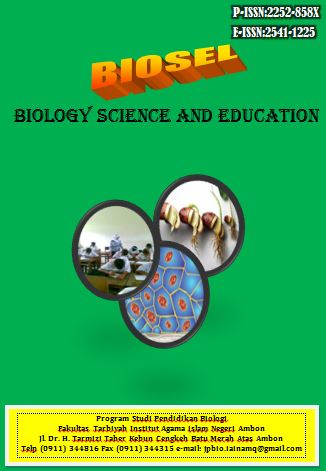Analysis of Biopore Infiltration Hole Benefits at Pengabdian Park, Tiyuh Mulya Jaya, Tulang Bawang Barat Regency, Lampung
DOI:
https://doi.org/10.33477/bs.v14i1.9259Abstract
Environmental problems caused by the decrease in green open spaces (RTH) and the increasing land conversion have disrupted the water infiltration system, leading to flooding during the rainy season and droughts during the dry season. One solution that can be implemented is the use of biopore infiltration holes (LRB) as a groundwater conservation method. This study aims to analyze the effectiveness of LRB in reducing rainwater runoff at Taman Pengabdian Tiyuh Mulya Jaya, Tulang Bawang Barat Regency. The research method used is quantitative descriptive with data collection techniques through observation, documentation, and rainfall intensity measurement. The research site covers an area of ±2100 m², with 21 LRBs applied. Data analysis was carried out to determine the optimal placement of LRBs, the ideal number of infiltration holes, and the volume of water absorbed. The results show that LRBs are effective in increasing water infiltration into the ground, reducing puddles, and maintaining groundwater availability. In this study, the total rainwater storage volume obtained was approximately ±37745.72 L, the application of LRBs has contributed to addressing rainwater runoff issues and supporting environmental conservation efforts. Therefore, the effectiveness in handling runoff water reached 43%.
Keywords: Biopore Infiltration Holes, Water Availability, Runoff Water Management
Downloads
Published
Issue
Section
License

This work is licensed under a Creative Commons Attribution-NonCommercial 4.0 International License.
Authors who publish with this journal agree to the following terms: Authors retain copyright and grant the journal right of first publication with the work simultaneously licensed under a Creative Commons Attribution License that allows others to share the work with an acknowledgement of the work's authorship and initial publication in this journal. Authors are able to enter into separate, additional contractual arrangements for the non-exclusive distribution of the journal's published version of the work (e.g., post it to an institutional repository or publish it in a book), with an acknowledgement of its initial publication in this journal. Authors are permitted and encouraged to post their work online (e.g., in institutional repositories or on their website) prior to and during the submission process, as it can lead to productive exchanges, as well as earlier and greater citation of published work.













